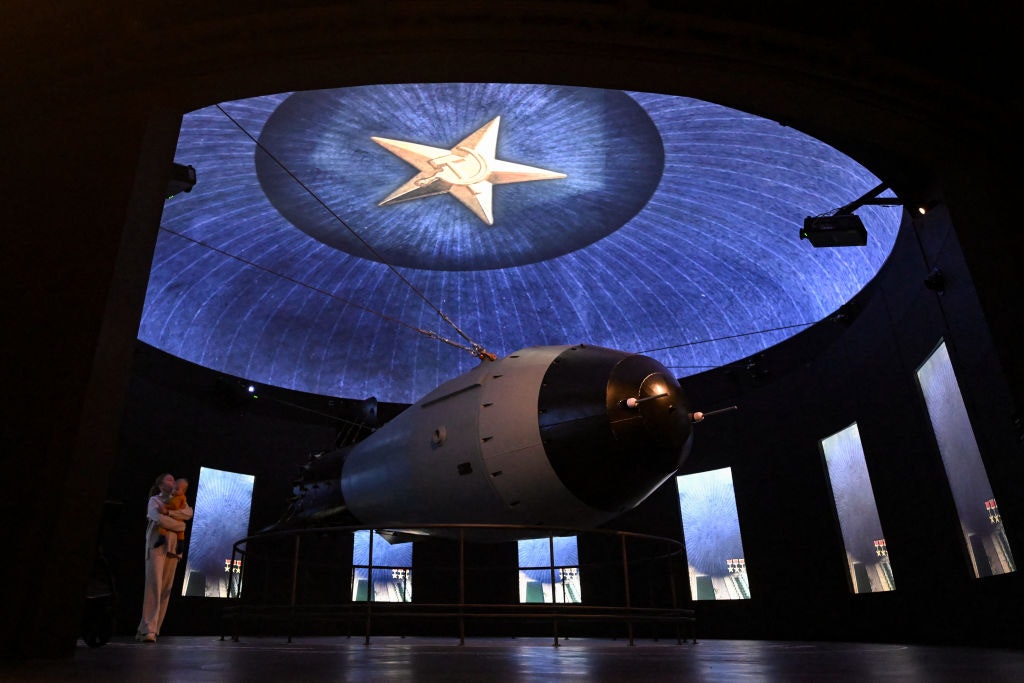Poland after the wedding
The Polish art scene is stuck in a futile game of tit-for-tat
The Polish playwright Stanisław Wyspiański’s 1901 symbolist stage drama Wesele (The Wedding) earned the artist the status of a national bard. Written at the advent of the nation’s break into modernity, the script follows the ruckus of a countryside village party celebrating the union between a poet and a peasant girl. Among the guests are members of the Kraków intelligentsia, countryside folk, and a cast of ghosts from the country’s past. They dance, drink, make merry, and argue their society’s most pressing questions of patriotism and visions of the future.
Set to the thumping sounds of a village band, this text is a seminal document of the growing pains of Polish national culture a hundred years into the country’s partition by its neighbouring powers. The nationalistic interests of the upper castes, voiced in Wyspiański’s text by journalists and artists, clashed with the loyalties of the peasantry who frequently sided with the occupying forces during the 19th century. Aspirations mixed with reality, literary myth with politics.
It is a pity that this drama, rich in forgotten historical references, is nearly incomprehensible to audiences today because Poland is once again struggling with a post-festum hangover. To the country’s liberal intelligentsia, the eight years of conservative rule after 2015 by the Law and Justice party (PiS) were a violent assault on the spirit of democracy akin to a hostile takeover. In recent years, the populist PiS embarked on a slow but brutal project of replacing the leaders of the country’s cultural institutions and reinvesting them with nation-building values such as religion and the family. As members of the art world lost their jobs, they denounced this populist takeover. They posed their internationalist, progressive values as synonymous with patriotism and formed a new “resistance” that once again jarred with the peasantry’s beliefs.
One of this resistance’s last acts of defiance was the votum separatum by three members of the commission overseeing Poland’s participation in this year’s Venice Biennale. According to the dissenters, the jury unfairly chose a project by Ignacy Czwartos which would pose Poland as a “tragic” nation stuck between Germany and Russia. Czwartos proposed filling the Venice pavilion with history portraits, including a canvas depicting Vladimir Putin styled as death from Bergman’s The Seventh Seal. It didn’t help that this project was promoted by Piotr Bernatowicz, a curator appointed by PiS to lead a major Warsaw institution among street protests.
This proposal “utterly disregards the state of the world”, the opposing jury members wrote, and would present an “image of Poland as a homogeneous, unopen country focused only on itself and speaking from the position of a victim.” Czwartos clearly missed that the vision of his country as “god’s playground”, as the historian Norman Davies once had it, is as unfashionable as the patriotism of Wesele. His work may be cringe-worthy by the standards of the international contemporary art world. But is it harder to see that it is also, as one of the jury members Joanna Warsza described it, “quasi-fascist”.
The liberals greeted October’s elections which ousted PiS from power with a sigh of relief and celebrated the formation of a new government led by the former President of the European Council Donald Tusk. It is as though Poland would become Poland again, only this time without having to disappear from the map for 123 years as it did when Wyspiański wrote his play. This transition, however, wouldn’t put an end to the culture war.
Within days of assuming office, the new minister of culture Bartłomiej Sienkiewicz fired Janusz Janowski, the director of Zechęta which oversees Poland’s participation in Venice, citing breaches of statutory responsibilities and advice from the artistic community. Janowski himself was installed as the head of the institution by the minister’s PiS predecessor in 2021 despite the art world’s vocal opposition.
An even half-attentive observer would see here a case of history repeating itself and time’s coil becoming tighter. The widely respected former director of Muzeum Sztuki in Łódź Jarosław Suchan, another victim of PiS culture wars, warned against the liberal coalition government repeating their predecessors’ treatment of culture as “an ideological weapon”. Images of Sienkiewicz sending the police to the studios of Poland’s state broadcasters to “restore the constitutional order” should have raised some alarm. Such executive zeal could warrant comparisons with the new Argentinian president Javier Mieli’s casual abolition of his country’s ministry of culture only days earlier.
All this was lost on the Polish art world because a week later, Sienkiewicz annulled the decision to award Poland’s Venice pavilion to Czwartos, much to the international art community’s delight. The honour of representing Poland in this year’s edition of the Biennale, whose centrally-bestowed curatorial theme is “Foreigners Everywhere”, will fall to the Ukrainian collective Open Group who were the runners-up in the competition. The outfit already represented their country in Venice in 2015. Two of the group’s three members live outside Ukraine. In Venice and in Warsaw, nationalism only passes if the nation is in peril as it was in Wyspiański.
Such institutional intrigues may be slow to influence the Polish public’s attitudes to Ukraine or their understanding of the open border, anti-state version of patriotism promoted by the pro-European liberals who now again hold political and cultural power. Just as in Wesele, one could be forgiven for losing track of what precisely the values they profess imply. Warsaw’s Ujazdowski Castle for Contemporary Art, for example, where Bernatowicz mercilessly goaded the liberal establishment with his conservative programming since PiS installed him three years ago, staged an unambiguously pro-Ukrainian exhibition in 2022. Was his vision of the Ukrainian nation “fascist”, while Open Group’s merely “patriotic”?
These fractions span the interests of the cultural field. In its 2023 round-up, the prominent cultural periodical Dwutygodnik reflected on a trend of exhibitions and cultural events relating to parenthood and care. They approvingly cited projects on childhood trauma at the Museum of Warsaw and radical care at Białystok’s Arsenal Gallery. They made no mention, however, of Ujazdowski’s Hidden Life, an exhibition accounting for “the child in Polish contemporary art”.
Do the liberals who today still boycott Ujazdowski’s — for now — populist-aligned programme presume that Bernatowicz commanded the forty artists in his exhibition to unquestionably adhere to a strictly heteronormative, ethno-nationalist vision of the family? A cursory glance at the show’s press release would undermine such a view. Bernatowicz, however, offends the proposal that pregnancy is the product of patriarchal exploitation promoted by an exhibition at Szczecin’s liberal-run gallery Trafo. To the uninformed observer, the artworks may look indistinguishable. To the political ideologue, however, the gap between them is unbridgeable.
The Polish art scene is thus still stuck in a game of tit-for-tat, with each side claiming moral rectitude and exploiting whatever power it can muster or corrupt. It is hardly surprising that this tussle of power is undignified. A lot is at stake for both the liberals and the populists because, as Suchan observed, the past eight years highlighted that culture does play a key role in shaping society. As though in agreement, PiS doubled Poland’s cultural budget and Suchan’s PiS-appointed successor in Łódź set about filling the museum’s collection with paintings by middle-aged men hitherto marginal to the art world. Worn by the fight, a large part of the intelligentsia abandoned the intuitions altogether, looking instead to the commercial gallery scene for absolution. It is as though nobody learned anything at all.
The populists’ cultural output hardly had any impact on the internationally mobile liberally minded parts of Polish society. The liberals, in turn, are unlikely to have understood that the support PiS and its culture enjoyed until just yesterday wasn’t only bigoted or xenophobic. 123 years after its premiere, Wesele is thus once again an apt picture of the tensions within Polish society. Except that the political imaginaries of the ruling elites and the populace are perverted. Today’s cultural institutions, like the play, present fictitious visions of the past and equally fanciful prophecies of the future.
Wesele’s final scenes betray a painful sense of an opportunity lost. Jasiek, a young, idealistic artist loses his bearings and leads a violent, rebellious attack on the traditional values represented in the peasant wedding. An apparition representing the historical arc turns the assembled characters into ghosts. Only Jasiek’s horn of gold, a wedding gift symbolising bridal purity, would wake them. In Wyspiański’s text, however, the horn has gone missing and Jasiek is left on stage alone clutching only at the tassel. Poles didn’t heed this warning in 1901. They aren’t likely to now, either.
Enjoying The Critic online? It's even better in print
Try five issues of Britain’s most civilised magazine for £10
Subscribe














